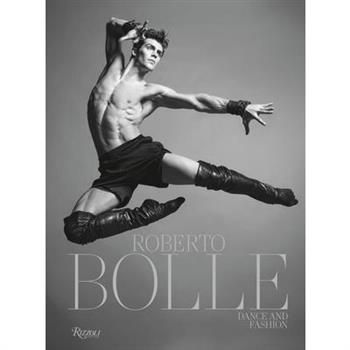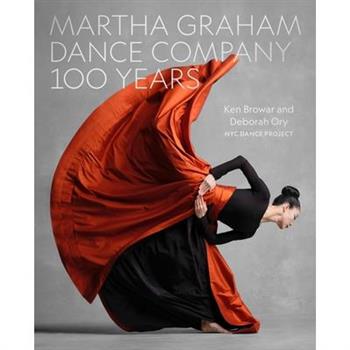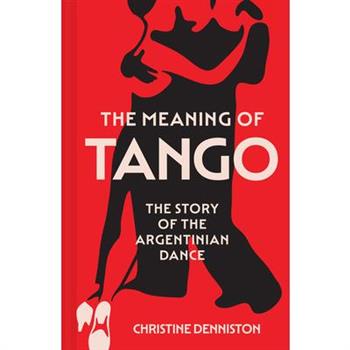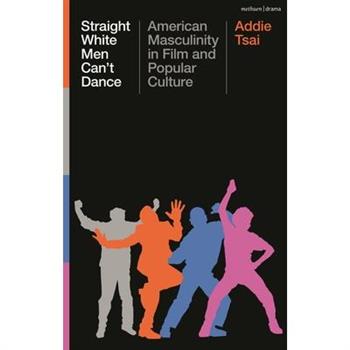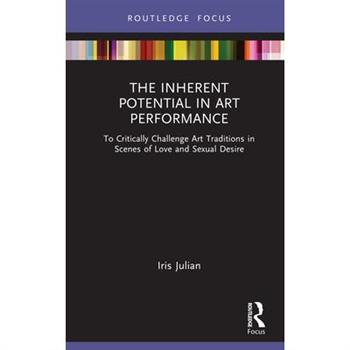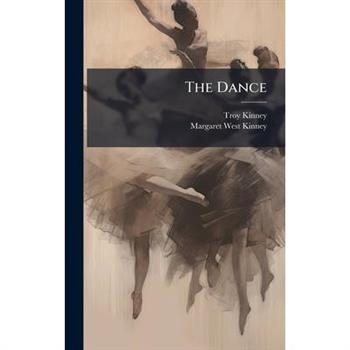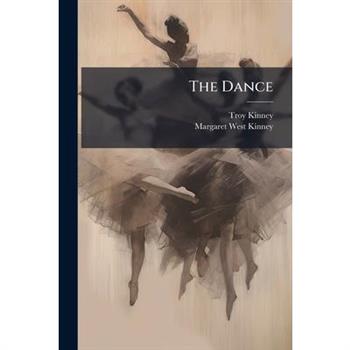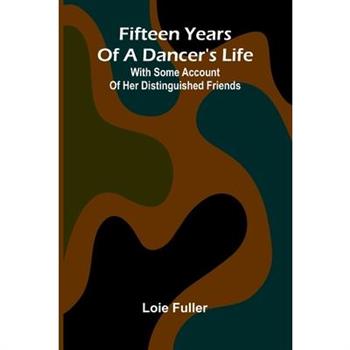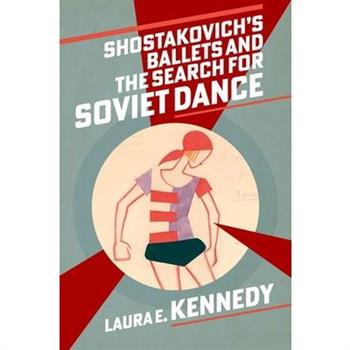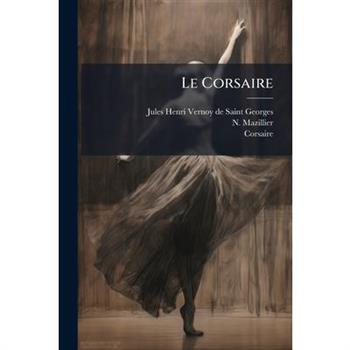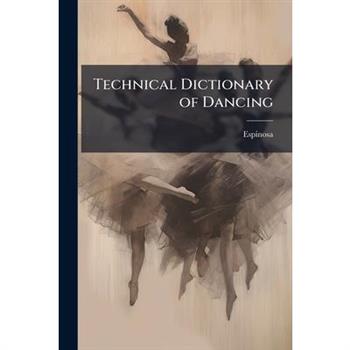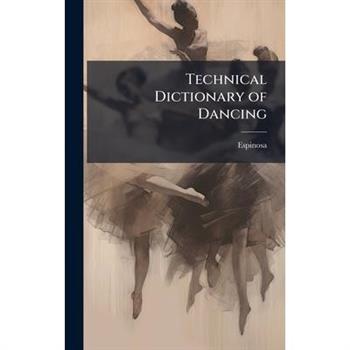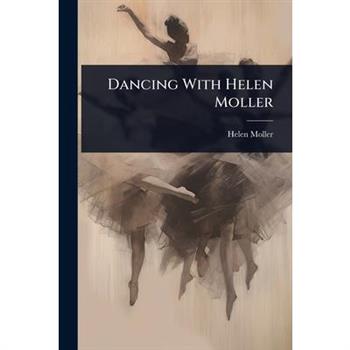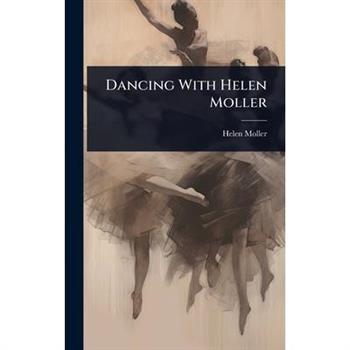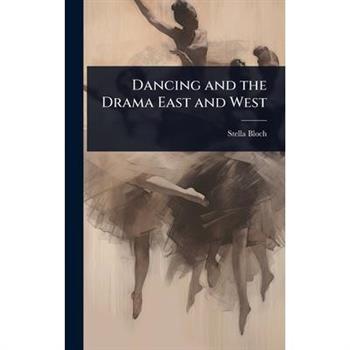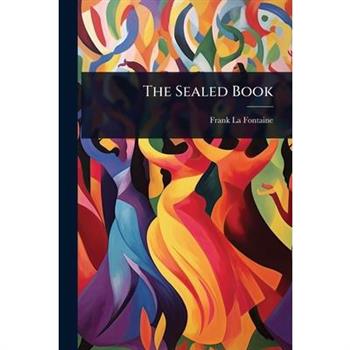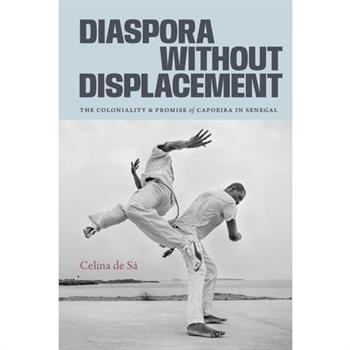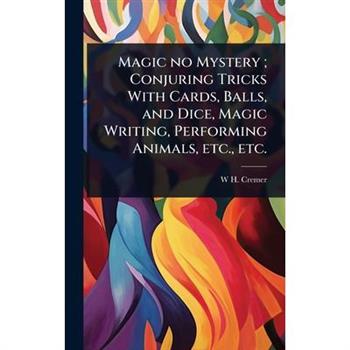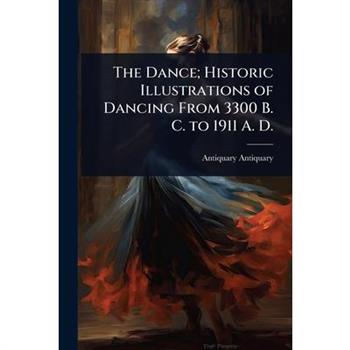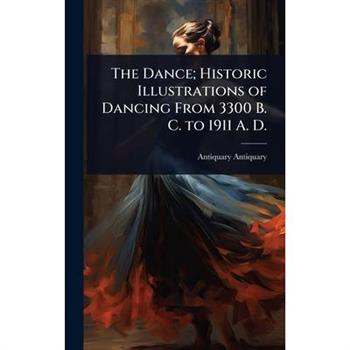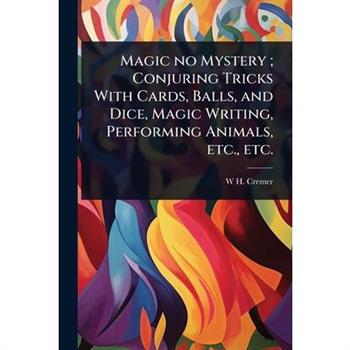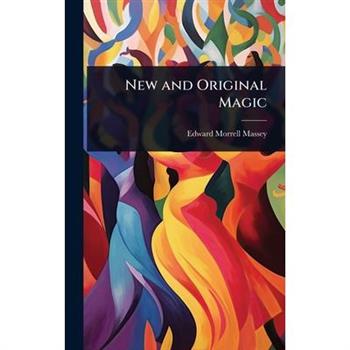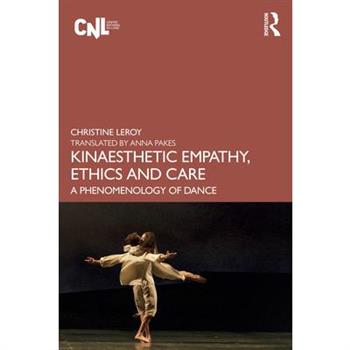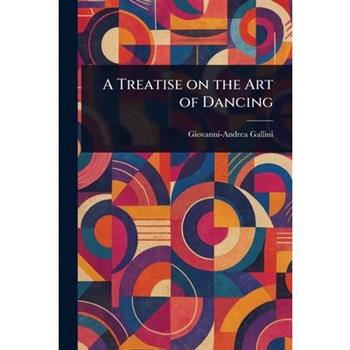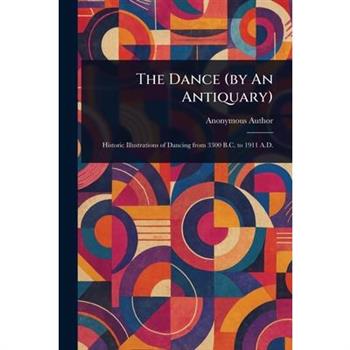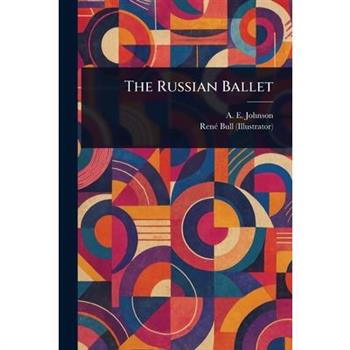Roberto Bolle
The definitive illustrated volume on Roberto Bolle, a dancer who, for his perfect physique and great artistry, has been called a "dancing Greek sculpture." This lavish text presents the magnificent Roberto Bolle, as seen through the lens of major international photographers including Bruce Weber, Annie Leibovitz, Fabrizio Ferri, Douglas Kirkland, Gian Paolo Barbieri, Giovanni Gastel, and Mario Testino, among others. Bolle's own words, alongside those of friends and fans from the worlds of performance, culture, and fashion, tell the story of his long and storied career on the international stage. Bolle's magnetic charisma helped bring dance to a wider audience, drawing large and enthusiastic crowds to the ballet. A much-courted media star, Bolle appeared in numerous fashion and style magazines, as well as advertising campaigns that brought his perfectly trained body to the cause of couture. Through the art of dance, Bolle has truly become one of Italy's cultural ambassadors to the world.
Martha Graham Dance Company 100 Years
A stunning photographic celebration of The Martha Graham Dance Company on its 100th anniversary, from Ken Browar and Deborah Ory, the creative team behind NYC Dance Project. Founded in 1926 by Martha Graham, The Martha Graham Dance Company is the oldest dance company in the United States and remains one of the world's most distinguished and highly acclaimed. Graham's original works drew from a variety of influences, notably Greek mythology, the American frontier, and traditional Native American ceremonies, and were characterized by her trademark technique of "contraction and release." She is also renowned for her ongoing collaboration with several of her contemporary creative visionaries, including sculptor Isamu Noguchi, actor and director John Houseman, composer Aaron Copland, and fashion designers Halston, Donna Karen, and Calvin Klein. Martha Graham Dance Company 100 Years is a monumental photographic tribute to Graham's profound creative heritage. Featuring a joyous selection of twenty-four of Graham's most memorable works, Browar and Ory capture the beauty and the precision of dancers who make up today's company and who carry the mantle of Graham's legacy. Each featured dance is prefaced by a piece of archival imagery as well as a description of the dance and notes on costume design, set design, and accompanying music. An in-depth feature on Noguchi's set design as well as an introduction by Martha Graham Dance Company artistic director Janet Eilber round out the program.
The Meaning of Tango
From the backstreets of Buenos Aires to Parisian high society, this is the extraordinary story of the dance that captivated the world - a tale of politics and passion, immigration and romance. 'As neat and comprehensive an account of both Tango history and technique as you could possibly want in one place. Fascinating, fun and very deftly done.' - Donald Hutera, dance critic for The Times The Meaning of Tango traces the roots of this captivating dance, from its birth in poverty-stricken Buenos Aires, the craze of the early twentieth century, right up until its revival today, thanks to shows such as Strictly Come Dancing. This book offers history, knowledge, teachings and insights which makes it valuable for beginners, yet its in-depth analysis makes it essential for experienced dancers. It is an elegant and cohesive critique of the fascinating tale of the Tango, which not only documents its culture and politics, but is also a fantastically useful guide to the techniques.
Official Strictly Come Dancing Annual 2025
Dust off your dancing shoes, Strictly is back! Featuring exclusive interviews with the celebs, judges, presenters and pro dancers, fun quizzes to test your ballroom knowledge and behind-the-scenes features to give you a glimpse into the glitz and glamour, this is your perfect partner for all things Strictly. Get the scoop on what goes on backstage with the It Takes Two presenters, hear from last year's winner and try your hand at the Strictly quiz and wordsearch.
Straight White Men Can't Dance
Straight White Men Can't Dance: American Masculinity in Film and Popular Culture investigates a trope proliferating throughout popular American media over the last half-century: that straight white men can't dance. Addie Tsai traces this reiterative moving image of vaudevillian buffoonery in film, television, and video from the mid-1980s to present-day. During the height of homophobic hysteria in response to the AIDS epidemic, dance began to be used as a marker to scrutinize white men's position within homosexuality and masculinity. Therefore, white men could misperform good dancing to more securely sit within hegemonic masculinity. Tsai establishes how ethnic mimicry within American popular media, even that of white masculinity, is produced and reiterated from the 19th-century theatrical practice of blackface minstrelsy. This history resurfaces in one of the exceptions to the trope: when white men use the hip currency of blackness to affirm their (dancing) masculinity through theft and positionality. By revealing how dance in American popular media reifies and problematizes gendered and racialized economies, Straight White Men Can't Dance demonstrates how the image of the buffoonish white male dancer operates as a smokescreen for the more violent manipulative forces of the reigning figure of white supremacy.
National Rhythms, African Roots
When John Charles Chasteen learned that Sim?n Bol穩var, the Liberator, danced on a banquet table to celebrate Latin American independence in 1824, he tried to visualize the scene. How, he wondered, did the Liberator dance? Did he bounce stiffly in his dress uniform? Or did he move his hips? In other words, how high had African dance influences reached in Latin American societies? A vast social gap separated Bol穩var from people of African descent; however, Chasteen's research shows that popular culture could bridge the gap.Fast-paced and often funny, this book explores the history of Latin American popular dance before the twentieth century. Chasteen first focuses on Havana, Buenos Aires, and Rio de Janeiro, where dances featuring a "transgressive close embrace" (forerunners of today's salsa, tango, and samba) emerged by 1900. Then, digging deeper in time, Chasteen uncovers the historical experiences that molded Latin American popular dance, including carnival celebrations, the social lives of slaves, European fashions, and, oddly enough, religious processions. The relationship between Latin American dance and nationalism, it turns out, is very deep, indeed.
The Inherent Potential in Art Performance
This book spotlights artworks and art performances whose common denominator is the theme of (self-)representation of artists in the 'woman' category in scenes of love and sexuality. Pursuing the research practice of deep drilling, this study presents various methodologies and research directions to create diverse perspectives on the selected artworks. This book combines historical outlines based on art history, visual culture studies, new methodologies in theatre studies and digressions into sociology. Philosophical readings will complement the resulting multiple perspective, in which figures of thought such as transimmanence, the theory of performativity and body-mind dualism are of specific interest. This research brings to the fore networks of sedimented and entangled histories and their role in shaping our ways of seeing. This study will be of great interest to scholars and students in dance, dance performance and art performance.
The Dance
"The Dance: Its Place In Art And Life" explores the rich history and cultural significance of dance throughout human civilization. Troy and Margaret West Kinney delve into the origins of dance as a fundamental form of expression, examining its evolution from ancient rituals to contemporary performance art. This insightful work analyzes the role of dance in various societies, highlighting its connections to music, visual arts, and social customs. From folk traditions to theatrical spectacles, the Kinneys capture the essence of dance as a powerful medium of communication and a reflection of human experience. Discover the enduring appeal of dance and its profound impact on art and life.This work has been selected by scholars as being culturally important, and is part of the knowledge base of civilization as we know it. This work was reproduced from the original artifact, and remains as true to the original work as possible. Therefore, you will see the original copyright references, library stamps (as most of these works have been housed in our most important libraries around the world), and other notations in the work.This work is in the public domain in the United States of America, and possibly other nations. Within the United States, you may freely copy and distribute this work, as no entity (individual or corporate) has a copyright on the body of the work.As a reproduction of a historical artifact, this work may contain missing or blurred pages, poor pictures, errant marks, etc. Scholars believe, and we concur, that this work is important enough to be preserved, reproduced, and made generally available to the public. We appreciate your support of the preservation process, and thank you for being an important part of keeping this knowledge alive and relevant.
The Dance
"The Dance: Its Place In Art And Life" explores the rich history and cultural significance of dance throughout human civilization. Troy and Margaret West Kinney delve into the origins of dance as a fundamental form of expression, examining its evolution from ancient rituals to contemporary performance art. This insightful work analyzes the role of dance in various societies, highlighting its connections to music, visual arts, and social customs. From folk traditions to theatrical spectacles, the Kinneys capture the essence of dance as a powerful medium of communication and a reflection of human experience. Discover the enduring appeal of dance and its profound impact on art and life.This work has been selected by scholars as being culturally important, and is part of the knowledge base of civilization as we know it. This work was reproduced from the original artifact, and remains as true to the original work as possible. Therefore, you will see the original copyright references, library stamps (as most of these works have been housed in our most important libraries around the world), and other notations in the work.This work is in the public domain in the United States of America, and possibly other nations. Within the United States, you may freely copy and distribute this work, as no entity (individual or corporate) has a copyright on the body of the work.As a reproduction of a historical artifact, this work may contain missing or blurred pages, poor pictures, errant marks, etc. Scholars believe, and we concur, that this work is important enough to be preserved, reproduced, and made generally available to the public. We appreciate your support of the preservation process, and thank you for being an important part of keeping this knowledge alive and relevant.
Jazz Practice In The Modern Era
Jazz Practice in the Modern Era: Methodology for the Aspiring Artist is an essential and visionary guide for the next generation of musicians, those who seek to break free from traditional confines and explore jazz as both an art form and a cultural language. In this groundbreaking manual, acclaimed composer, performer, and educator Antonio Underwood presents a transformative methodology that speaks directly to classically trained musicians eager to navigate the world of jazz improvisation, interpretation, and innovation.More than a music theory book, this work is a manual of creative process, a rare blend of philosophical insight, cultural awareness, and practical instruction that draws on Underwood's unique experiences across genres, continents, and generations. With a background that spans Grammy Award-winning performances and academic rigor from institutions like Yale, Underwood guides readers through a deeper understanding of jazz as a living, evolving tradition.Whether you're studying at a conservatory, exploring music independently, or teaching the next wave of artists, this book offers a multidimensional approach that will expand your musical and creative horizons.Inside this book, you'll discover: How to transition from classical structure to jazz spontaneity with confidenceKey improvisational strategies rooted in tradition and modern applicationTechniques for integrating jazz concepts into academic and real-world performance settingsThe cultural and historical roots of jazz and its role in shaping modern musicInspirational insights that encourage self-expression, intuition, and authenticityWays to connect technical training to storytelling, collaboration, and personal voiceFrom bebop to hip-hop, from spirituals to swing, Jazz Practice in the Modern Era challenges aspiring artists to embrace a more expansive view of music, one that values interpretation over imitation, dialogue over direction, and soul over scale.This book is perfect for: Young musicians raised in classical music systemsEducators seeking to bridge classical and contemporary teaching methodsJazz students looking for a structured yet flexible practice frameworkMulti-genre artists pursuing a deeper understanding of improvisationAnyone passionate about the creative intersection of music, identity, and cultureWith clarity, passion, and purpose, Antonio Underwood invites musicians of all levels and backgrounds to step beyond the notes and into the freedom of expression that jazz offers. This isn't just a method book, it's a modern-day manifesto for the artist within.
Knowing as Moving
In Knowing as Moving, Susan Leigh Foster theorizes how the act of moving in and through the world creates the potential for individual and collective bodies to connect. Starting from the assertion that knowing takes place through bodily movement, Foster moves away from the Western philosophical traditions of dance, critiquing the Cartesian mind-body duality and its colonizing politics. She draws on Native and Indigenous studies, ecological cognitive science, disability studies, phenomenology, and new materialism to explore how knowledge is neither static nor storable. Thinking is a physical action and the product of an entire neuromuscular system with its mobile postural and gestural configurations, perceptual systems, and brain activity. Foster outlines how reading, examining, talking, and remembering are all forms of moving and contends that any process of knowing establishes one's identity and relationality. By focusing on the centrality of bodily movement to thought and self, she contributes a decolonial critique of the study of knowledge and being. In so doing, Foster replaces the Cartesian-colonial "I think, therefore I am" with a decolonial "I move, and therefore I know."
Fifteen years of a dancer's life
Step into the enchanting world of dance with "Fifteen Years of a Dancer's Life," a captivating memoir that unveils the personal journey of a remarkable artist. This extraordinary book, long out of print, has been lovingly restored by Alpha Editions for today s and future generations, making it a true collector s item and cultural treasure. In this vivid account, the author shares not only the highs and lows of a dancer's career but also the intimate friendships forged with some of the most distinguished artists of her time. From the exhilarating performances that leave audiences breathless to the struggles behind the scenes, this memoir offers an unparalleled glimpse into the performing arts history and the vibrant dance culture of the era. Readers will be drawn into the emotional tapestry of artistic life stories, enriched by the author's reflections on her influential companions and the profound impact they had on her journey. Whether you are a casual reader seeking inspiration or a classic literature collector eager to explore the depths of dance friendships and career insights, this book promises to resonate with your soul. Don't miss your chance to experience this unique literary gem "Fifteen Years of a Dancer's Life" is not just a reprint; it's a celebration of the artistry, passion, and resilience that define the world of dance.
Incredible Odisha
Through this book, Incredible Odisha, meticulously prepared by Dr. Sonali Sahu, an effective teacher in English and an efficient scholar with in-depth knowledge on cultural nuances, we invite readers to explore these traditions not as isolated performances but as living legacies tied to the land, the festivals, the faiths, and the everyday lives of its people. Each dance form is a mirror to the region's history, its resilience, and its connection to the divine and the communal.We owe a deep debt of gratitude to the artists, gurus, scholars, and communities who continue to breathe life into these traditions. It is their passion and perseverance that have inspired this book. May this work serve as a step toward preserving, documenting, and celebrating the diverse dance heritage of Odisha.Let us move together to the rhythm of Incredible Odisha.Prof. Basanta Kumar PandaProject Director Centre of Excellence for Classical Odia Ministry of Education Govt. of India
Nevertheless
A legendary choreographer's personal and practical guide to the art of dance-making Yvonne Rainer was a founding member of Judson Dance Theater, a 1960s New York artists' collective that championed ordinary, spare movements and spontaneity. Rainer's decades of creativity--in dance and in filmmaking--have inspired generations of avant-garde, political, and feminist choreographers. Her many works include the iconic dance Trio A and the film Hand Movie. In this book, Rainer dancer and choreographer Emmanu癡le Phuon helps Rainer gather teaching notes from her dance classes and workshops, passages from her creative journals, and her newer thoughts on movement and art, opening a window on to the life's work of a transformative artist. With fifty prompts for improvisational movement ("39. Travel a long distance as fast as you can while making regular changes in your means of locomotion"), sly illustrations by Pascal Lema簾tre, and an illuminating interview with Phuon, this workbook makes Rainer's friendly, humorous, and down&-to-earth creative practice available to everyone. Because, as Rainer says, if you can move, you are a dancer.
Shostakovich's Ballets and the Search for Soviet Dance
The late 1920s and early 1930s were a pivotal moment in Russian cultural development: a time of uncertainty but also of openness and experimentation in the arts and especially in dance. During this period in Leningrad, Dmitri Shostakovich composed three ballets--The Golden Age, The Bolt, and The Limpid Stream--at a time when he was consolidating his position as Soviet Russia's preeminent young composer. His three ballets aimed at creating Soviet ballet, or works that commanded the technical legacy of the genre but that promoted contemporary topics and Soviet cultural policies. The Limpid Stream proved hugely successful and was even staged as part of the 1935 celebrations for Stalin's birthday at the Bolshoi Theatre in Moscow. Six weeks later, however, the ballet was condemned, just a week after Shostakovich's opera Lady Macbeth suffered a similar fate. Shostakovich never wrote another ballet. Shostakovich's ballets of the early 1930s occupied a unique moment in Soviet cultural history and in the development of early Soviet dance. As author Laura E. Kennedy demonstrates, cultural policy shifted frequently and rapidly in these years, summoning all areas of Soviet life to new orthodoxies. Like other arts, ballet emerged as a testing ground for the marriage of artistic innovation to Soviet ideology. Kennedy argues that Shostakovich's three ballets shaped the search for a Soviet approach to the genre in offering three distinct responses to these demands. At the same time, they illuminated the pressures and concerns that vied for dominance in the experimental environment of the late 1920s and early 1930s. Throughout, Kennedy draws on extensive archival materials from St. Petersburg and Moscow--many of which have not previously been published--that preserve the creative record of Shostakovich's ballets in scores, r矇p矇titeurs, photographs, libretti, costume sketches, set designs, theatre documents, and annals of performance. Backed by these primary sources, she charts the complex histories of Shostakovich's ballets, their contributions to dance in Russia, and their impact on the composer's artistic career and the genre of ballet in the twentieth century.
Shostakovich's Ballets and the Search for Soviet Dance
The late 1920s and early 1930s were a pivotal moment in Russian cultural development: a time of uncertainty but also of openness and experimentation in the arts and especially in dance. During this period in Leningrad, Dmitri Shostakovich composed three ballets--The Golden Age, The Bolt, and The Limpid Stream--at a time when he was consolidating his position as Soviet Russia's preeminent young composer. His three ballets aimed at creating Soviet ballet, or works that commanded the technical legacy of the genre but that promoted contemporary topics and Soviet cultural policies. The Limpid Stream proved hugely successful and was even staged as part of the 1935 celebrations for Stalin's birthday at the Bolshoi Theatre in Moscow. Six weeks later, however, the ballet was condemned, just a week after Shostakovich's opera Lady Macbeth suffered a similar fate. Shostakovich never wrote another ballet. Shostakovich's ballets of the early 1930s occupied a unique moment in Soviet cultural history and in the development of early Soviet dance. As author Laura E. Kennedy demonstrates, cultural policy shifted frequently and rapidly in these years, summoning all areas of Soviet life to new orthodoxies. Like other arts, ballet emerged as a testing ground for the marriage of artistic innovation to Soviet ideology. Kennedy argues that Shostakovich's three ballets shaped the search for a Soviet approach to the genre in offering three distinct responses to these demands. At the same time, they illuminated the pressures and concerns that vied for dominance in the experimental environment of the late 1920s and early 1930s. Throughout, Kennedy draws on extensive archival materials from St. Petersburg and Moscow--many of which have not previously been published--that preserve the creative record of Shostakovich's ballets in scores, r矇p矇titeurs, photographs, libretti, costume sketches, set designs, theatre documents, and annals of performance. Backed by these primary sources, she charts the complex histories of Shostakovich's ballets, their contributions to dance in Russia, and their impact on the composer's artistic career and the genre of ballet in the twentieth century.
Le Corsaire
"Le Corsaire" is a celebrated ballet in three acts, originally choreographed by Joseph Mazilier to music by Adolphe Adam. The libretto was written by Jules-Henri Vernoy de Saint-Georges and Joseph Mazilier, loosely based on Lord Byron's poem "The Corsair." This edition presents the libretto itself, offering readers the chance to delve into the narrative that inspired the iconic choreography. Set against a backdrop of adventure and romance, "Le Corsaire" tells a tale of pirates, captives, and daring escapes. Though the ballet has undergone numerous revivals and revisions, its core story and dramatic potential continue to captivate audiences worldwide. This edition preserves the spirit of the original libretto, allowing both dance enthusiasts and literary readers to appreciate the work's historical and artistic significance.This work has been selected by scholars as being culturally important, and is part of the knowledge base of civilization as we know it. This work was reproduced from the original artifact, and remains as true to the original work as possible. Therefore, you will see the original copyright references, library stamps (as most of these works have been housed in our most important libraries around the world), and other notations in the work.This work is in the public domain in the United States of America, and possibly other nations. Within the United States, you may freely copy and distribute this work, as no entity (individual or corporate) has a copyright on the body of the work.As a reproduction of a historical artifact, this work may contain missing or blurred pages, poor pictures, errant marks, etc. Scholars believe, and we concur, that this work is important enough to be preserved, reproduced, and made generally available to the public. We appreciate your support of the preservation process, and thank you for being an important part of keeping this knowledge alive and relevant.
Le Corsaire
"Le Corsaire" is a celebrated ballet in three acts, originally choreographed by Joseph Mazilier to music by Adolphe Adam. The libretto was written by Jules-Henri Vernoy de Saint-Georges and Joseph Mazilier, loosely based on Lord Byron's poem "The Corsair." This edition presents the libretto itself, offering readers the chance to delve into the narrative that inspired the iconic choreography. Set against a backdrop of adventure and romance, "Le Corsaire" tells a tale of pirates, captives, and daring escapes. Though the ballet has undergone numerous revivals and revisions, its core story and dramatic potential continue to captivate audiences worldwide. This edition preserves the spirit of the original libretto, allowing both dance enthusiasts and literary readers to appreciate the work's historical and artistic significance.This work has been selected by scholars as being culturally important, and is part of the knowledge base of civilization as we know it. This work was reproduced from the original artifact, and remains as true to the original work as possible. Therefore, you will see the original copyright references, library stamps (as most of these works have been housed in our most important libraries around the world), and other notations in the work.This work is in the public domain in the United States of America, and possibly other nations. Within the United States, you may freely copy and distribute this work, as no entity (individual or corporate) has a copyright on the body of the work.As a reproduction of a historical artifact, this work may contain missing or blurred pages, poor pictures, errant marks, etc. Scholars believe, and we concur, that this work is important enough to be preserved, reproduced, and made generally available to the public. We appreciate your support of the preservation process, and thank you for being an important part of keeping this knowledge alive and relevant.
Technical Dictionary of Dancing
"Technical Dictionary of Dancing" by Espinosa, originally published in 1922, is a comprehensive reference guide to the terminology of dance. This dictionary provides definitions of various dance steps, movements, and techniques, offering valuable insights into the art of classical ballet and other dance forms. It is an essential resource for dancers, choreographers, historians, and anyone interested in the intricacies of dance. With detailed explanations and a rich historical context, this dictionary remains a timeless contribution to the understanding and appreciation of dance as a technical and artistic discipline.This work has been selected by scholars as being culturally important, and is part of the knowledge base of civilization as we know it. This work was reproduced from the original artifact, and remains as true to the original work as possible. Therefore, you will see the original copyright references, library stamps (as most of these works have been housed in our most important libraries around the world), and other notations in the work.This work is in the public domain in the United States of America, and possibly other nations. Within the United States, you may freely copy and distribute this work, as no entity (individual or corporate) has a copyright on the body of the work.As a reproduction of a historical artifact, this work may contain missing or blurred pages, poor pictures, errant marks, etc. Scholars believe, and we concur, that this work is important enough to be preserved, reproduced, and made generally available to the public. We appreciate your support of the preservation process, and thank you for being an important part of keeping this knowledge alive and relevant.
Technical Dictionary of Dancing
"Technical Dictionary of Dancing" by Espinosa, originally published in 1922, is a comprehensive reference guide to the terminology of dance. This dictionary provides definitions of various dance steps, movements, and techniques, offering valuable insights into the art of classical ballet and other dance forms. It is an essential resource for dancers, choreographers, historians, and anyone interested in the intricacies of dance. With detailed explanations and a rich historical context, this dictionary remains a timeless contribution to the understanding and appreciation of dance as a technical and artistic discipline.This work has been selected by scholars as being culturally important, and is part of the knowledge base of civilization as we know it. This work was reproduced from the original artifact, and remains as true to the original work as possible. Therefore, you will see the original copyright references, library stamps (as most of these works have been housed in our most important libraries around the world), and other notations in the work.This work is in the public domain in the United States of America, and possibly other nations. Within the United States, you may freely copy and distribute this work, as no entity (individual or corporate) has a copyright on the body of the work.As a reproduction of a historical artifact, this work may contain missing or blurred pages, poor pictures, errant marks, etc. Scholars believe, and we concur, that this work is important enough to be preserved, reproduced, and made generally available to the public. We appreciate your support of the preservation process, and thank you for being an important part of keeping this knowledge alive and relevant.
Dancing With Helen Moller
In "Dancing With Helen Moller," Helen Moller presents her philosophy, practice, and teaching methods, drawing inspiration from classic Greek models. Edited by Curtis Dunham and introduced by Ivan, this book adapts ancient wisdom to meet the aesthetic and hygienic needs of the modern era. Moller's approach emphasizes the connection between movement, health, and personal growth. Explore the principles that guided her renowned dance instruction and discover how to incorporate these timeless techniques into your own life. This work offers insights into the art of dance as a means of achieving physical and spiritual well-being.This work has been selected by scholars as being culturally important, and is part of the knowledge base of civilization as we know it. This work was reproduced from the original artifact, and remains as true to the original work as possible. Therefore, you will see the original copyright references, library stamps (as most of these works have been housed in our most important libraries around the world), and other notations in the work.This work is in the public domain in the United States of America, and possibly other nations. Within the United States, you may freely copy and distribute this work, as no entity (individual or corporate) has a copyright on the body of the work.As a reproduction of a historical artifact, this work may contain missing or blurred pages, poor pictures, errant marks, etc. Scholars believe, and we concur, that this work is important enough to be preserved, reproduced, and made generally available to the public. We appreciate your support of the preservation process, and thank you for being an important part of keeping this knowledge alive and relevant.
Dancing With Helen Moller
In "Dancing With Helen Moller," Helen Moller presents her philosophy, practice, and teaching methods, drawing inspiration from classic Greek models. Edited by Curtis Dunham and introduced by Ivan, this book adapts ancient wisdom to meet the aesthetic and hygienic needs of the modern era. Moller's approach emphasizes the connection between movement, health, and personal growth. Explore the principles that guided her renowned dance instruction and discover how to incorporate these timeless techniques into your own life. This work offers insights into the art of dance as a means of achieving physical and spiritual well-being.This work has been selected by scholars as being culturally important, and is part of the knowledge base of civilization as we know it. This work was reproduced from the original artifact, and remains as true to the original work as possible. Therefore, you will see the original copyright references, library stamps (as most of these works have been housed in our most important libraries around the world), and other notations in the work.This work is in the public domain in the United States of America, and possibly other nations. Within the United States, you may freely copy and distribute this work, as no entity (individual or corporate) has a copyright on the body of the work.As a reproduction of a historical artifact, this work may contain missing or blurred pages, poor pictures, errant marks, etc. Scholars believe, and we concur, that this work is important enough to be preserved, reproduced, and made generally available to the public. We appreciate your support of the preservation process, and thank you for being an important part of keeping this knowledge alive and relevant.
Theatres of the Body
Theatres of the Body is Lynn Matluck Brooks' critical examination of danced stage productions in antebellum Philadelphia. Starting in the 1820s, Brooks explores visual art and social and theatrical dancing across different classes, focusing on the work of E. W. Clay. Continuing through the 1830s, she looks at pantomime ballets and blackface minstrelsy through a political lens, asking questions regarding citizenship, slavery, and freedom. At the time, the city boasted the largest number of native-born ballet dancers in the young nation. Philadelphia also became a creative home to blackface star T. D. Rice, who helped popularize that performance genre. Reviewing print culture in the 1840s, Brooks shows how newspapers, magazines, and popular fiction provided documentation of dancing in Philadelphia as well as the responses of dance commentators, practitioners, and moralists. Theatres of the Body also considers the interplay of science with dance in the 1850s, which impacted both dance practices and reception. Providing an expansive historiography of these significant contributions to dance in the United States, Brooks deepens our understanding of antebellum culture and history.
Theatres of the Body
Theatres of the Body is Lynn Matluck Brooks' critical examination of danced stage productions in antebellum Philadelphia. Starting in the 1820s, Brooks explores visual art and social and theatrical dancing across different classes, focusing on the work of E. W. Clay. Continuing through the 1830s, she looks at pantomime ballets and blackface minstrelsy through a political lens, asking questions regarding citizenship, slavery, and freedom. At the time, the city boasted the largest number of native-born ballet dancers in the young nation. Philadelphia also became a creative home to blackface star T. D. Rice, who helped popularize that performance genre. Reviewing print culture in the 1840s, Brooks shows how newspapers, magazines, and popular fiction provided documentation of dancing in Philadelphia as well as the responses of dance commentators, practitioners, and moralists. Theatres of the Body also considers the interplay of science with dance in the 1850s, which impacted both dance practices and reception. Providing an expansive historiography of these significant contributions to dance in the United States, Brooks deepens our understanding of antebellum culture and history.
The Sealed Book
Unlock the secrets to astonishing card magic with "The Sealed Book: 50 New Card Secrets" by Frank La Fontaine. This comprehensive guide reveals fifty brand-new, never-before-seen card tricks guaranteed to amaze and confound your audience. Whether you're a seasoned magician or a budding enthusiast, you'll find a wealth of material to elevate your card handling skills. Inside, La Fontaine shares invaluable insights and techniques, providing clear and concise instructions for each trick. Master the art of sleight of hand, learn innovative card controls, and discover captivating presentations that will leave spectators in awe. "The Sealed Book" is your key to unlocking a world of wonder and becoming a true master of card magic.This work has been selected by scholars as being culturally important, and is part of the knowledge base of civilization as we know it. This work was reproduced from the original artifact, and remains as true to the original work as possible. Therefore, you will see the original copyright references, library stamps (as most of these works have been housed in our most important libraries around the world), and other notations in the work.This work is in the public domain in the United States of America, and possibly other nations. Within the United States, you may freely copy and distribute this work, as no entity (individual or corporate) has a copyright on the body of the work.As a reproduction of a historical artifact, this work may contain missing or blurred pages, poor pictures, errant marks, etc. Scholars believe, and we concur, that this work is important enough to be preserved, reproduced, and made generally available to the public. We appreciate your support of the preservation process, and thank you for being an important part of keeping this knowledge alive and relevant.
European Drama and Performance Studies 2025 1,24
Florence d'Artois, Les textualites de la danse a l'epoque premoderne. Pratiques de l'ecrit, desir d'archive et necessite d'un positionnement methodologique - Mark Franko, Dance textualities and the theoretical terms of early-modern dance writing - Marie-Therese Mourey, La danse, un langage entre texte, rythme et image. Espace germanique - Lynn S. Meskill, The dance described. Ben Jonson's Masques in print
Dancing and the Drama East and West
璽€œDancing and the Drama East and West璽€ (1922) explores the rich tapestry of dance and dramatic traditions across cultures. Stella Bloch offers insights into both Eastern and Western performance arts, examining their historical roots, techniques, and artistic expressions. This comparative study illuminates the unique characteristics of each tradition while also revealing common threads in the human experience as expressed through movement and narrative. Bloch's work provides a valuable perspective on the interplay between dance and drama, shedding light on their cultural significance and enduring appeal. For students, researchers, and enthusiasts of the performing arts, this book offers a fascinating journey through the world of dance and theater.This work has been selected by scholars as being culturally important, and is part of the knowledge base of civilization as we know it. This work was reproduced from the original artifact, and remains as true to the original work as possible. Therefore, you will see the original copyright references, library stamps (as most of these works have been housed in our most important libraries around the world), and other notations in the work.This work is in the public domain in the United States of America, and possibly other nations. Within the United States, you may freely copy and distribute this work, as no entity (individual or corporate) has a copyright on the body of the work.As a reproduction of a historical artifact, this work may contain missing or blurred pages, poor pictures, errant marks, etc. Scholars believe, and we concur, that this work is important enough to be preserved, reproduced, and made generally available to the public. We appreciate your support of the preservation process, and thank you for being an important part of keeping this knowledge alive and relevant.
Dancing and the Drama East and West
璽€œDancing and the Drama East and West璽€ (1922) explores the rich tapestry of dance and dramatic traditions across cultures. Stella Bloch offers insights into both Eastern and Western performance arts, examining their historical roots, techniques, and artistic expressions. This comparative study illuminates the unique characteristics of each tradition while also revealing common threads in the human experience as expressed through movement and narrative. Bloch's work provides a valuable perspective on the interplay between dance and drama, shedding light on their cultural significance and enduring appeal. For students, researchers, and enthusiasts of the performing arts, this book offers a fascinating journey through the world of dance and theater.This work has been selected by scholars as being culturally important, and is part of the knowledge base of civilization as we know it. This work was reproduced from the original artifact, and remains as true to the original work as possible. Therefore, you will see the original copyright references, library stamps (as most of these works have been housed in our most important libraries around the world), and other notations in the work.This work is in the public domain in the United States of America, and possibly other nations. Within the United States, you may freely copy and distribute this work, as no entity (individual or corporate) has a copyright on the body of the work.As a reproduction of a historical artifact, this work may contain missing or blurred pages, poor pictures, errant marks, etc. Scholars believe, and we concur, that this work is important enough to be preserved, reproduced, and made generally available to the public. We appreciate your support of the preservation process, and thank you for being an important part of keeping this knowledge alive and relevant.
The Sealed Book
Unlock the secrets to astonishing card magic with "The Sealed Book: 50 New Card Secrets" by Frank La Fontaine. This comprehensive guide reveals fifty brand-new, never-before-seen card tricks guaranteed to amaze and confound your audience. Whether you're a seasoned magician or a budding enthusiast, you'll find a wealth of material to elevate your card handling skills. Inside, La Fontaine shares invaluable insights and techniques, providing clear and concise instructions for each trick. Master the art of sleight of hand, learn innovative card controls, and discover captivating presentations that will leave spectators in awe. "The Sealed Book" is your key to unlocking a world of wonder and becoming a true master of card magic.This work has been selected by scholars as being culturally important, and is part of the knowledge base of civilization as we know it. This work was reproduced from the original artifact, and remains as true to the original work as possible. Therefore, you will see the original copyright references, library stamps (as most of these works have been housed in our most important libraries around the world), and other notations in the work.This work is in the public domain in the United States of America, and possibly other nations. Within the United States, you may freely copy and distribute this work, as no entity (individual or corporate) has a copyright on the body of the work.As a reproduction of a historical artifact, this work may contain missing or blurred pages, poor pictures, errant marks, etc. Scholars believe, and we concur, that this work is important enough to be preserved, reproduced, and made generally available to the public. We appreciate your support of the preservation process, and thank you for being an important part of keeping this knowledge alive and relevant.
The Voice of Dance
In The Voice of Dance, Callie Rich invites you to relive with her, three unforgettable months of movement, music & magic in Medell穩n, Colombia. Part travel diary, part cultural love letter & part soul-stirring invitation, this bilingual book offers more than just stories-it offers an experience. From street salsa to spirited conversations in her blossoming Spanish, from journaling with vulnerability to filming a documentary that captures the healing power of dance, Callie takes you step-by-step through her adventure abroad-and inward. With English summaries, vibrant photos & podcast links, this book isn't just something you read. It's something you feel. Whether you're a dreamer, a dancer, a traveler, or someone ready to start shaping a life you love, The Voice of Dance will inspire you to take your own 90-day leap into joy, purpose, and possibility. Because the world is waiting.
Diaspora Without Displacement
Capoeira--a game of combat primarily developed by enslaved West Central Africans--has become an icon of both Brazilian national culture and pride in the country's diasporic African heritage. Yet the sport remains less accessible in Africa itself, overshadowed in large part by participants in the Global North. In Diaspora Without Displacement, Celina de S獺 tells the story of capoeira as it "returns" to the African continent through the creative initiatives of young urban professionals in Senegal. De S獺 demonstrates how a new generation of African capoeiristas are taking up their own Afro-diasporic performance tradition, effectively reframing notions of diaspora and race through their social practice. Though capoeira has largely Angolan roots and the agents of return are typically white Brazilians and Europeans, the West African practitioners de S獺 documents nonetheless form an exceptional relationship to capoeira that, in turn, becomes a mode of political and social consciousness. Analyzing a capoeira network across West Africa, de S獺 shows how urban West Africans use capoeira to explore the relationship between Blackness, diaspora, and African heritage.
Magic no Mystery; Conjuring Tricks With Cards, Balls, and Dice, Magic Writing, Performing Animals, etc., etc.
Delve into the enchanting world of illusion with 璽€œMagic No Mystery, 璽€ a comprehensive guide to conjuring tricks and magical performances. Authored by W.H. Cremer, this timeless volume unveils a treasure trove of secrets behind captivating illusions, offering instruction on tricks involving cards, balls, and dice. Discover the art of magic writing and learn how to train performing animals, adding a unique flair to your repertoire.Whether you're an aspiring magician or simply curious about the craft, 璽€œMagic No Mystery璽€ provides clear and accessible explanations, making it easy to master a variety of illusions. Amaze your audience with classic card manipulations, baffling dice routines, and the mystique of seemingly impossible feats. With step-by-step instructions and helpful illustrations, this book is perfect for anyone eager to unlock the secrets of the magical arts.This work has been selected by scholars as being culturally important, and is part of the knowledge base of civilization as we know it. This work was reproduced from the original artifact, and remains as true to the original work as possible. Therefore, you will see the original copyright references, library stamps (as most of these works have been housed in our most important libraries around the world), and other notations in the work.This work is in the public domain in the United States of America, and possibly other nations. Within the United States, you may freely copy and distribute this work, as no entity (individual or corporate) has a copyright on the body of the work.As a reproduction of a historical artifact, this work may contain missing or blurred pages, poor pictures, errant marks, etc. Scholars believe, and we concur, that this work is important enough to be preserved, reproduced, and made generally available to the public. We appreciate your support of the preservation process, and thank you for being an important part of keeping this knowledge alive and relevant.
The Dance; Historic Illustrations of Dancing From 3300 B. C. to 1911 A. D.
Explore the rich history of dance through the ages with "The Dance; Historic Illustrations of Dancing From 3300 B. C. to 1911 A. D." This fascinating collection of illustrations offers a unique glimpse into the evolution of dance as a social, artistic, and cultural phenomenon. From ancient rituals to elegant ballroom dances, this book showcases the diverse forms and styles that have shaped the world of dance.Compiled from historical sources, the illustrations provide valuable insights into the costumes, settings, and movements of dancers throughout history. Whether you are a dance enthusiast, a historian, or simply curious about the past, this book offers a captivating journey through the ages of dance. Discover the enduring appeal of this art form and its significance in human expression and culture.This work has been selected by scholars as being culturally important, and is part of the knowledge base of civilization as we know it. This work was reproduced from the original artifact, and remains as true to the original work as possible. Therefore, you will see the original copyright references, library stamps (as most of these works have been housed in our most important libraries around the world), and other notations in the work.This work is in the public domain in the United States of America, and possibly other nations. Within the United States, you may freely copy and distribute this work, as no entity (individual or corporate) has a copyright on the body of the work.As a reproduction of a historical artifact, this work may contain missing or blurred pages, poor pictures, errant marks, etc. Scholars believe, and we concur, that this work is important enough to be preserved, reproduced, and made generally available to the public. We appreciate your support of the preservation process, and thank you for being an important part of keeping this knowledge alive and relevant.
The Dance; Historic Illustrations of Dancing From 3300 B. C. to 1911 A. D.
Explore the rich history of dance through the ages with "The Dance; Historic Illustrations of Dancing From 3300 B. C. to 1911 A. D." This fascinating collection of illustrations offers a unique glimpse into the evolution of dance as a social, artistic, and cultural phenomenon. From ancient rituals to elegant ballroom dances, this book showcases the diverse forms and styles that have shaped the world of dance.Compiled from historical sources, the illustrations provide valuable insights into the costumes, settings, and movements of dancers throughout history. Whether you are a dance enthusiast, a historian, or simply curious about the past, this book offers a captivating journey through the ages of dance. Discover the enduring appeal of this art form and its significance in human expression and culture.This work has been selected by scholars as being culturally important, and is part of the knowledge base of civilization as we know it. This work was reproduced from the original artifact, and remains as true to the original work as possible. Therefore, you will see the original copyright references, library stamps (as most of these works have been housed in our most important libraries around the world), and other notations in the work.This work is in the public domain in the United States of America, and possibly other nations. Within the United States, you may freely copy and distribute this work, as no entity (individual or corporate) has a copyright on the body of the work.As a reproduction of a historical artifact, this work may contain missing or blurred pages, poor pictures, errant marks, etc. Scholars believe, and we concur, that this work is important enough to be preserved, reproduced, and made generally available to the public. We appreciate your support of the preservation process, and thank you for being an important part of keeping this knowledge alive and relevant.
Magic no Mystery; Conjuring Tricks With Cards, Balls, and Dice, Magic Writing, Performing Animals, etc., etc.
Delve into the enchanting world of illusion with 璽€œMagic No Mystery, 璽€ a comprehensive guide to conjuring tricks and magical performances. Authored by W.H. Cremer, this timeless volume unveils a treasure trove of secrets behind captivating illusions, offering instruction on tricks involving cards, balls, and dice. Discover the art of magic writing and learn how to train performing animals, adding a unique flair to your repertoire.Whether you're an aspiring magician or simply curious about the craft, 璽€œMagic No Mystery璽€ provides clear and accessible explanations, making it easy to master a variety of illusions. Amaze your audience with classic card manipulations, baffling dice routines, and the mystique of seemingly impossible feats. With step-by-step instructions and helpful illustrations, this book is perfect for anyone eager to unlock the secrets of the magical arts.This work has been selected by scholars as being culturally important, and is part of the knowledge base of civilization as we know it. This work was reproduced from the original artifact, and remains as true to the original work as possible. Therefore, you will see the original copyright references, library stamps (as most of these works have been housed in our most important libraries around the world), and other notations in the work.This work is in the public domain in the United States of America, and possibly other nations. Within the United States, you may freely copy and distribute this work, as no entity (individual or corporate) has a copyright on the body of the work.As a reproduction of a historical artifact, this work may contain missing or blurred pages, poor pictures, errant marks, etc. Scholars believe, and we concur, that this work is important enough to be preserved, reproduced, and made generally available to the public. We appreciate your support of the preservation process, and thank you for being an important part of keeping this knowledge alive and relevant.
New and Original Magic
Delve into the enchanting world of illusion with "New and Original Magic," a comprehensive guide by Edward Morrell Massey. Originally published in 1922, this timeless work unveils a collection of novel and entertaining magic effects, offering a treasure trove of knowledge for both seasoned professionals and aspiring amateurs. Inside, readers will discover a wide array of tricks and techniques, from classic illusions to innovative creations, all explained with clarity and precision. Massey's expertise shines through as he provides detailed instructions and insightful tips, empowering magicians to captivate audiences with their skill and artistry. Whether you're a seasoned performer or just beginning your magical journey, "New and Original Magic" is sure to inspire and delight.This work has been selected by scholars as being culturally important, and is part of the knowledge base of civilization as we know it. This work was reproduced from the original artifact, and remains as true to the original work as possible. Therefore, you will see the original copyright references, library stamps (as most of these works have been housed in our most important libraries around the world), and other notations in the work.This work is in the public domain in the United States of America, and possibly other nations. Within the United States, you may freely copy and distribute this work, as no entity (individual or corporate) has a copyright on the body of the work.As a reproduction of a historical artifact, this work may contain missing or blurred pages, poor pictures, errant marks, etc. Scholars believe, and we concur, that this work is important enough to be preserved, reproduced, and made generally available to the public. We appreciate your support of the preservation process, and thank you for being an important part of keeping this knowledge alive and relevant.
New and Original Magic
Delve into the enchanting world of illusion with "New and Original Magic," a comprehensive guide by Edward Morrell Massey. Originally published in 1922, this timeless work unveils a collection of novel and entertaining magic effects, offering a treasure trove of knowledge for both seasoned professionals and aspiring amateurs. Inside, readers will discover a wide array of tricks and techniques, from classic illusions to innovative creations, all explained with clarity and precision. Massey's expertise shines through as he provides detailed instructions and insightful tips, empowering magicians to captivate audiences with their skill and artistry. Whether you're a seasoned performer or just beginning your magical journey, "New and Original Magic" is sure to inspire and delight.This work has been selected by scholars as being culturally important, and is part of the knowledge base of civilization as we know it. This work was reproduced from the original artifact, and remains as true to the original work as possible. Therefore, you will see the original copyright references, library stamps (as most of these works have been housed in our most important libraries around the world), and other notations in the work.This work is in the public domain in the United States of America, and possibly other nations. Within the United States, you may freely copy and distribute this work, as no entity (individual or corporate) has a copyright on the body of the work.As a reproduction of a historical artifact, this work may contain missing or blurred pages, poor pictures, errant marks, etc. Scholars believe, and we concur, that this work is important enough to be preserved, reproduced, and made generally available to the public. We appreciate your support of the preservation process, and thank you for being an important part of keeping this knowledge alive and relevant.
Hollywood Dance-Ins and the Reproduction of Bodies
Hollywood Dance-ins and the Reproduction of Bodies proposes that a figure who barely registers in film studies or dance studies offers valuable insight into ideas about "the body" and the reproductive labor that gives rise to images of bodies. The book is the first scholarly study of the dance-in, a dancer who executes a star's choreography as cameras are being focused and lights are being set. While they share similarities with doubles and stand-ins, dance-ins do not replace stars' bodies on screen and they often serve multiple unseen roles, including as choreographers' assistants and stars' coaches, making them vital to the creation and transmission of choreography. Focusing on dance-ins in mid-twentieth century Hollywood, when film musicals and the studio system were at their height, author Anthea Kraut exposes the racialized and gendered "corporeal ecosystem" that operated behind the scenes, propping up and concealed behind the seeming self-referentiality of white stars' filmic dancing bodies. A production history informed by feminist materialist approaches to labor and critical race theory, Hollywood Dance-ins tells the stories of the 1940s white pin-up star Betty Grable's dependence on her white dance-in Angie Blue; the African American jazz dancer Marie Bryant's private coaching of a myriad of stars in the late 1940s and early 1950s; Carol Haney and Jeanne Coyne's training of the white ing矇(c)nue Debbie Reynolds for Singi'璽 in the Rain (1952); the Mexican American dancer Alex Romero's close partnership with the white star Gene Kelly; and the biracial star Nancy Kwan's on- and off-screen exchanges with a white production team and Asian/American ensemble members in Flower Drum Song (1961).
Kinaesthetic Empathy, Ethics and Care
Kinaesthetic Empathy, Ethics and Care develops a philosophy of dance that highlights the psychological, aesthetic and ethical significance of dancer-viewer interaction in the moment of performance.Leroy draws on phenomenology, psychoanalysis, dance studies and care ethics to analyse kinaesthetic empathy as a form of intersubjective performance. She shows how, in the contagion or interweaving between corporealities of dancer and viewer, each party supports or upholds the other in a process of mutual care. Dance movement involves a play with gravity which alleviates the weight of repressed desire and redefines the contours of the body-image, facilitating psychological self-repair. Through projection into the body of another, we can develop our independence and autonomy as subjects, even in the midst of relational being. Richly illustrated with theatre dance examples, Leroy's argument develops a corporeal basis for ethics and reveals how a return to the moving body through dance helps lay the foundations for a more humane society.This book will interest philosophers, dance researchers, care ethicists and care practitioners, as well as advanced students in these fields and general readers curious about the aesthetic and ethical potency of theatre dance.
Staging Decadence
Winner of the 2024 TaPRA David Bradby Monograph PrizeHow is decadence being staged today - as a practice, issue, pejorative, and as a site of pleasure? Where might we find it, why might we look for it, and who is decadence for?This book is the first monographic study of decadence in theatre and performance. Adam Alston makes a passionate case for the contemporary relevance of decadence in the thick of a resurgent culture war by focusing on its antithetical relationship to capitalist-led growth, progress, and intensified productivity. He argues that the qualities used to disparage the study and practice of theatre and performance are the very things we should embrace in celebrating their value - namely, their spectacular uselessness, wastefulness, outmodedness, and abundant potential for producing forms of creativity that flow away from the ends and excesses of capitalism. Alston covers an eclectic range of examples by Julia Bardsley (UK), Hasard Le Sin (Finland), jaamil olawale kosoko (USA), Toco Nikaido (Japan), Martin O'Brien (UK), Toshiki Okada (Japan), Marcel-l穩 Ant繳nez Roca (Spain), Normandy Sherwood (USA), The Uhuruverse (USA), Nia O. Witherspoon (USA), and Wunderbaum (Netherlands). Expect ruminations on monstrous scenographies, catatonic choreographies, turbo-charged freneticism, visions of the apocalypse - and what might lie in its wake.
The Planetary Gestures in Eurythmy
Celebrated eurythmist Werner Barfod details the seven planetary gestures in eurythmy and outlines how each expresses a different relationship of the human being to the world. Eurythmy is an art form that makes sounds visible through movement. As well as gestures for speech and music, eurythmy also incorporates gestures that relate to the stars and the planets, as indicated by Rudolf Steiner. In this fascinating book, a companion volume to The Zodiac Gestures in Eurythmy, Werner Barfod describes the seven planetary gestures and how each one expresses a different relationship of the human being to the world. He explains how the planetary forces work in different people, and the meditative development and ways of working that eurythmists need to cultivate to bring creativity into their art. This book will appeal to eurythmy teachers and practitioners who want to deepen their art and spiritual work.





